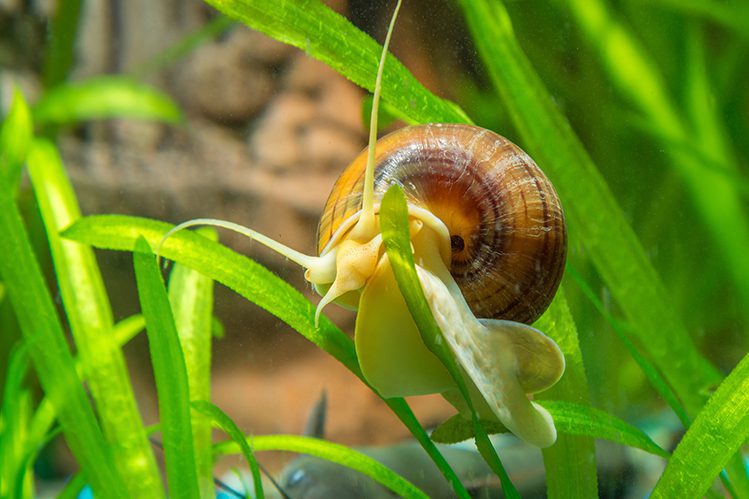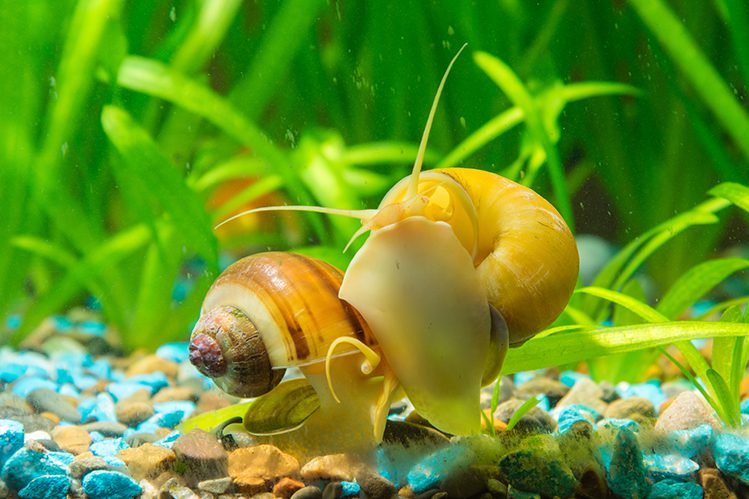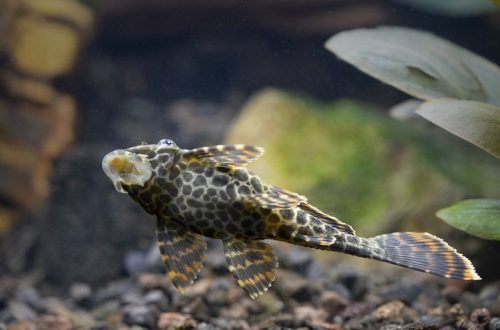
Ampoules in the aquarium
By ampoule, many novice aquarists mean a huge sunny yellow snail, which slowly plows the expanses of the aquarium. But this is just one of the representatives of this motley family. It’s time to talk about snails in the aquarium in more detail.
Choosing ampoule
Ampoules are a whole family of aquarium molluscs. They are not only yellow, but also black, blue, lilac, white, pink, blue, purple, brown and so on. Not all varieties of snails grow to impressive sizes. There are bigger and smaller snails. The dimensions of the mollusk depend not only on the variety, but also on the age.
When choosing snails, we recommend choosing younger individuals. Their age is short, from one to four years. With the ampoule, care and the necessary conditions of detention serve as a guarantee that the pet will delight you with its presence in the aquarium for a longer time. The smaller the snail, the longer life it has ahead of it. In addition, small snails are more agile, more energetic, they are better at the role of aquarium orderlies than larger individuals.
Make sure that you have the opportunity to provide comfortable living conditions for the snails. These picturesque mollusks are suitable for water temperatures in the region of 22-24 degrees or slightly higher. Plus a filter and weekly partial water changes. It is extremely important not to allow an increased concentration of nitrogenous compounds, because ammonia, nitrites and nitrates are also harmful to fish, and snails are even more sensitive to them.
It is better to keep these beautiful snails in water with hardness and acidity values above seven. It is important for the responsible owner to remember that against the background of a lack of calcium, the ampoule shell is destroyed. You can prevent this by adding small seashells to the bottom of the aquarium, as well as marble chips and limestone chips.
Where can I get ampoule? It’s a good idea to get them from an aquarist who has become a reluctant breeder. In very good conditions, snails breed with great enthusiasm, so many owners in the aquarium eventually end up with many more young snails than they need.
Before planting new wards in your aquarium with fish and plants, we recommend keeping them in a separate container in quarantine for two to four weeks.

Features of care and neighborhood
Although the conditions suitable for snails resonate with the conditions for keeping most aquarium fish, it is better for them to choose those fish that do not mind hard water as neighbors. There are a lot of options: platies, mollies, guppies, swordtails and others.
Please note that some aquarium residents are not averse to eating mollusks, or at least pinching their mustaches. The ampoule snail can completely hide in the shell and cover the inlet with a protective cover. But what kind of life is this? Ampoule in the aquarium is better to settle with peaceful and non-aggressive fish. When in doubt, seek advice from experienced aquarists on their blogs or thematic forums. Ask with whom their snails coexist, whether they coexist amicably with their comrades in the aquadom.
In the company of gourami and other labyrinth fish, large and aggressive cichlids, tetradons, snails are definitely not good enough. Even very calm goldfish and swordtails can slightly bite, frighten your bright snails. If you notice that the fish in the aquarium show an unhealthy interest in snails, it is better to plant the mollusks in a separate container.
And how do snails feel surrounded by plants? Very good, but snails can eat all the underwater flora, which is more like tender grass shoots. What can’t they eat? Oak and robust plants like Cryptocoryne, Echinodorus, Anubias. This is the neighborhood of ampoule just right.
The ampoule snail is able to breathe under water, gills, and atmospheric air. A special siphon tube helps her in this, which the snail pulls out when it wants to take a sip of air above the surface of the water. Be sure to cover the aquarium with a lid, otherwise the respiratory abilities and curiosity will lead the snail to travel around the apartment. And so that she has something to breathe under the lid, leave about 10 centimeters of air space between the water’s edge and the lid. This gap is also useful in order for the ampoule to lay eggs.
What to feed ampoule?
On the one hand, they can not be fed anything at all. Vegetable food, food leftovers for fish – the orderlies of the aquarium will always find something to profit from. On the other hand, there are aquarists who treat their sun-yellow clams with food in the form of tablets based on spirulina algae. You can also treat them with a piece of banana peel.
The ampoule snail is able to breathe under water, gills, and atmospheric air. A special siphon tube helps her in this, which the snail pulls out when it wants to take a sip of air above the surface of the water. Be sure to cover the aquarium with a lid, otherwise the respiratory abilities and curiosity will lead the snail to travel around the apartment. And so that she has something to breathe under the lid, leave about 10 centimeters of air space between the water’s edge and the lid. This gap is also useful in order for the ampoule to lay eggs.

offspring of snails
Although it is unlikely that you will be able to distinguish between male and female apple snails, the clutch of eggs that looks like a bunch of grapes will be direct evidence that there is a couple of snails in love in your aquarium. The female lays her eggs out of the water, about a hundred at a time. It is important to keep the humidity under the lid of the aquarium. The masonry should neither dry out nor be excessively wet. At first, the shell of the eggs has a matte silvery tint, then the whole bunch turns pink, darkens with time, and shortly before the baby snails hatch, it becomes completely black.
The question is that some aquarium fish are not averse to eating such caviar or even snail crumbs. If you understand that there is a threat, you can slightly wet the masonry, carefully separate it from the walls of the aquarium and transfer it to a separate aquarium. Small snails are preparing for the birth of two to four weeks. If the situation in the aquarium is such that nothing threatens them inside the eggs, but after birth the babies have a chance of being eaten, transfer the eggs to another container before hatching the baby snails. If the masonry is firmly attached to the wall of the aquadom, then for transplantation, newborns will have to be carefully caught with a saucer.
Small snails at first can be fed with mashed fish food. And there they will already understand that nature has created them as orderlies of the aquahouse. It is important to remember about regular water changes in the aquarium for young snails. When they grow up so much that they no longer fit in the mouth of aquarium inhabitants, young animals can be released into a common aquarium.
We wish your snails health and cheerful mood!





